Hitachi MK-96RD647-01 User Manual
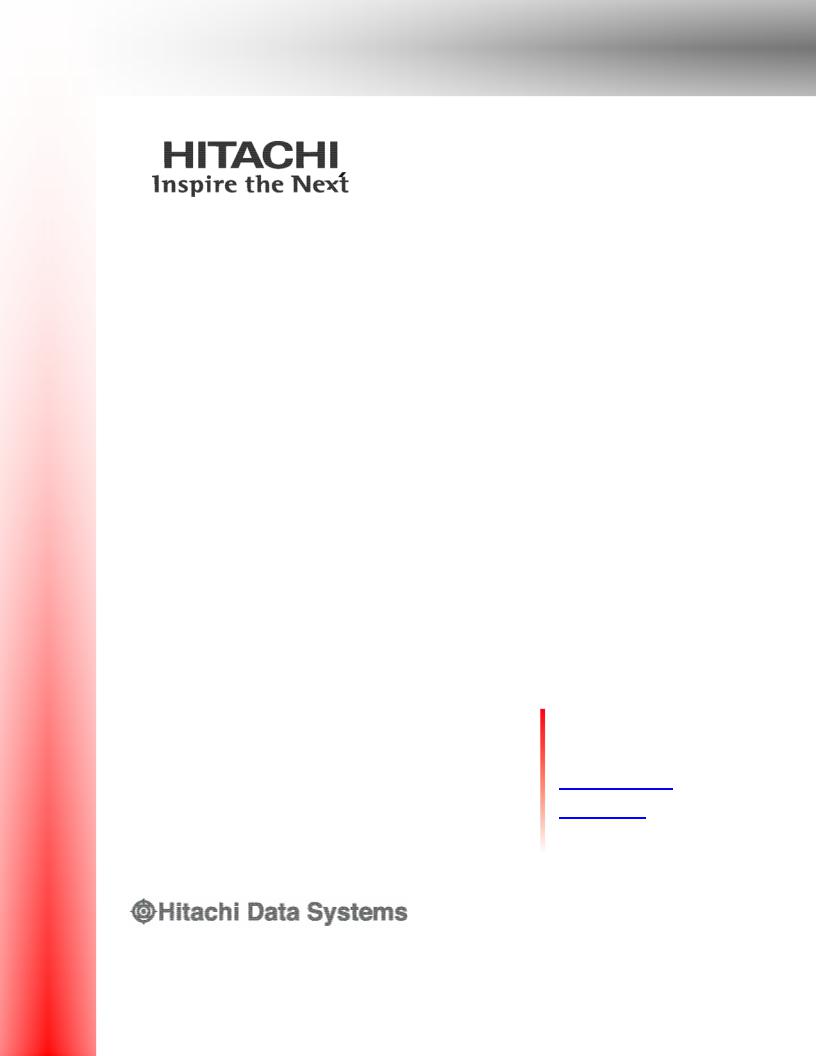
Hitachi Universal Storage Platform V
Cross-OS File Exchange User’s Guide
FASTFIND LINKS
Document Organization
Product Version
Getting Help
Contents
MK-96RD647-01

Copyright © 2007 Hitachi Data Systems Corporation,
ALL RIGHTS RESERVED
Notice: No part of this publication may be reproduced or transmitted in any form or by any means, electronic or mechanical, including photocopying and recording, or stored in a database or retrieval system for any purpose without the express written permission of Hitachi Data Systems Corporation (hereinafter referred to as “Hitachi Data Systems”).
Hitachi Data Systems reserves the right to make changes to this document at any time without notice and assumes no responsibility for its use. Hitachi Data Systems products and services can only be ordered under the terms and conditions of Hitachi Data Systems’ applicable agreements. All of the features described in this document may not be currently available. Refer to the most recent product announcement or contact your local Hitachi Data Systems sales office for information on feature and product availability.
This document contains the most current information available at the time of publication. When new and/or revised information becomes available, this entire document will be updated and distributed to all registered users.
Hitachi Data Systems is a registered trademark and service mark of Hitachi, Ltd., and the Hitachi Data Systems design mark is a trademark and service mark of Hitachi, Ltd.
All other brand or product names are or may be trademarks or service marks of and are used to identify products or services of their respective owners.
ii
Hitachi USP V Cross-OS File Exchange User’s Guide

|
Contents |
Preface.................................................................................................. |
vii |
Overview of Hitachi Cross-OS File Exchange (FX) .................................... |
1-1 |
About Cross-OS File Exchange Operations .............................................. |
2-1 |
Components ..................................................................................................... |
2-2 |
FX Volume Types........................................................................................ |
2-4 |
FCU File Transfer Options .................................................................................. |
2-7 |
Code Conversion (CC) Option ...................................................................... |
2-8 |
PIPE Function........................................................................................... |
2-11 |
Using the PIPE function in UNIX Systems ............................................. |
2-11 |
FAL/FCU Pipe Function Details............................................................. |
2-12 |
Pipe Function Time-Out Value ............................................................. |
2-12 |
Padding (PAD) Option ............................................................................... |
2-13 |
Delimiter (DEL) Option .............................................................................. |
2-14 |
Empty File (Emp) Option ........................................................................... |
2-14 |
Record Description Word (RDW) Option ..................................................... |
2-16 |
VSE Record (VSE) Option........................................................................... |
2-16 |
FXmto Operations ........................................................................................... |
2-17 |
FXmto with Fixed-Length Record Format .................................................... |
2-18 |
FXmto with Variable-Length Record Format ................................................ |
2-19 |
FXmto with Multiple Volume Datasets......................................................... |
2-23 |
FXotm Operations ........................................................................................... |
2-24 |
FXotm with Fixed-Length Record Format .................................................... |
2-25 |
FXotm with Variable-Length Record Format ................................................ |
2-28 |
FXoto Operations ............................................................................................ |
2-29 |
Host Access and I/O Contention ....................................................................... |
2-30 |
AIX Shared Open Function ............................................................................... |
2-32 |
AIX Reserve Function ...................................................................................... |
2-34 |
AIX Reserved Retry Function ..................................................................... |
2-34 |
Contents |
iii |
|
|
Hitachi USP V Cross-OS File Exchange User’s Guide |
|
Environment Variables and Functions ........................................................ |
2-34 |
Bidirectional Data Transfer .............................................................................. |
2-36 |
Preparing for Cross-OS File Exchange Operations.................................... |
3-1 |
System Requirements ....................................................................................... |
3-2 |
VSE Requirements and Restrictions ............................................................. |
3-4 |
Compiler Requirements .............................................................................. |
3-6 |
Maximum Data Size ................................................................................... |
3-7 |
Interoperability with HDLM ......................................................................... |
3-9 |
Installing and Configuring the FX Volumes........................................................ |
3-10 |
Installing the FAL/FCU Software ...................................................................... |
3-15 |
Installing FAL/FCU on UNIX-Based Platforms.............................................. |
3-15 |
32-Bit FAL/FCU Software.................................................................... |
3-15 |
64-Bit FAL/FCU Software.................................................................... |
3-18 |
Installing FAL/FCU on Windows................................................................. |
3-19 |
Uninstalling the FAL/FCU Software on UNIX-Based Plaforms........................ |
3-20 |
Uninstalling FAL/FCU on Windows ............................................................. |
3-20 |
Entering the FX License Key Code.................................................................... |
3-21 |
Creating FXoto Volumes Using the FMT Utility................................................... |
3-22 |
Creating the FX Volume Definition File(s).......................................................... |
3-28 |
Verifying Mainframe Dataset Requirements....................................................... |
3-32 |
Allocating FXoto Intermediate Datasets ............................................................ |
3-33 |
Using the Cross-OS File Exchange Software............................................ |
4-1 |
|
|
FCU for UNIX ................................................................................................... |
4-2 |
|
FCU Version and Copyright Screen .............................................................. |
4-2 |
|
File Conversion Utility Screen ...................................................................... |
4-4 |
|
File Menu Commands .......................................................................... |
4-8 |
|
Help Menu Commands......................................................................... |
4-8 |
|
Error Information Screen .......................................................................... |
4-10 |
|
FCU for Windows............................................................................................ |
4-10 |
|
FCU Version and Copyright Dialog ............................................................. |
4-10 |
|
File Conversion Utility Window .................................................................. |
4-12 |
|
Volume Information Dialog ....................................................................... |
4-14 |
|
Mainframe File Information Dialog............................................................. |
4-14 |
|
Option Dialog .......................................................................................... |
4-16 |
|
Parameter Line Dialog .............................................................................. |
4-18 |
|
Execute Dialogs ....................................................................................... |
4-18 |
|
Error Information Dialog........................................................................... |
4-20 |
|
Log Files ................................................................................................. |
4-21 |
|
Format Utility for Windows .............................................................................. |
4-22 |
|
Allocation Utility for Windows .......................................................................... |
4-27 |
iv |
Contents |
|
|
|
|
|
Hitachi USP V Cross-OS File Exchange User’s Guide |
|
Performing Cross-OS File Exchange Operations....................................... |
5-1 |
Performing File Transfer Operations - UNIX ......................................................... |
5-3 |
Starting the FCU GUI for UNIX..................................................................... |
5-3 |
Performing File Transfer Operations (UNIX) .................................................. |
5-6 |
Using the listvol Function (UNIX)............................................................ |
5-8 |
Creating FCU Parameter Definition Files (UNIX)............................................. |
5-9 |
Creating Multiple Volume Definition Files (UNIX) ......................................... |
5-10 |
Using FCU from the Command Line (UNIX)................................................. |
5-12 |
Performing File Transfer Operations – Windows................................................. |
5-17 |
Starting the FCU GUI ................................................................................ |
5-17 |
Performing File Transfer Operations (Windows)........................................... |
5-19 |
Creating FCU Parameter Definition Files (Windows) ..................................... |
5-23 |
Creating Multiple Volume Definition Files (Windows).................................... |
5-25 |
Using FCU from the Command Line (Windows) ........................................... |
5-27 |
Performing File Access Library (FAL) Operations ..................................... |
6-1 |
FAL Requirements ............................................................................................. |
6-2 |
FAL Functions ................................................................................................... |
6-3 |
Converting Dataset Attribute Information ..................................................... |
6-3 |
Opening a Dataset...................................................................................... |
6-4 |
Reading Data ............................................................................................. |
6-5 |
Writing Data............................................................................................... |
6-6 |
Closing a Dataset........................................................................................ |
6-7 |
Acquiring Error Information ......................................................................... |
6-7 |
Acquiring Dataset Attributes ........................................................................ |
6-8 |
Acquiring Attribute Information for a Specific Dataset ............................. |
6-8 |
Acquiring Attribute Information for Multiple Datasets .............................. |
6-9 |
Converting DO and RF Information ............................................................ |
6-12 |
Converting the Dataset Organization (DO) Type Value .......................... |
6-12 |
Converting the Record Format (RF) Type Value .................................... |
6-12 |
Using the FAL Functions .................................................................................. |
6-14 |
Multi-Thread Function...................................................................................... |
6-18 |
Information Storage Area .......................................................................... |
6-19 |
Open Dataset ........................................................................................... |
6-20 |
Read Data................................................................................................ |
6-22 |
Write Data ............................................................................................... |
6-23 |
Close Dataset ........................................................................................... |
6-24 |
Free Information Stored Area .................................................................... |
6-25 |
Initialize Target Record Pointer .................................................................. |
6-26 |
Get Dataset Attribute Information .............................................................. |
6-27 |
Get Specified Dataset Attribute Information.......................................... |
6-27 |
Get Multiple Dataset Attribute Information ........................................... |
6-28 |
Compiling ....................................................................................................... |
6-31 |
Error Information ............................................................................................ |
6-32 |

FAL Usage Scenario ........................................................................................ |
6-33 |
Troubleshooting ................................................................................... |
7-1 |
Troubleshooting ............................................................................................... |
7-2 |
Error Codes and Messages ................................................................................ |
7-3 |
FCU Error Codes for UNIX........................................................................... |
7-7 |
FCU Error Codes for Windows Systems ...................................................... |
7-16 |
Calling the Support Center .............................................................................. |
7-21 |
EBCDIC-ASCII Code Conversion ............................................................ |
A-1 |
Acronyms and Abbreviations ..................................................... |
Acronyms-1 |
Index ............................................................................................ |
Index-1 |
vi |
Contents |
Hitachi USP V Cross-OS File Exchange User’s Guide

Preface
This Hitachi TagmaStore® USP and NSC Cross-OS File Exchange (FX) User’s Guide describes and provides instructions for installing and using the FX feature of the Hitachi TagmaStore Universal Storage Platform V (USP V) and Network Storage Controller (NSC) disk array subsystems.
Please read this document carefully to understand how to use this product, and maintain a copy for reference purposes.
This preface includes the following information:
Intended Audience
Product Version
Document Revision Level
Changes in this Revision
Document Organization
Referenced Documents
Document Conventions
Convention for Storage Capacity Values
Getting Help
Comments
Notice: The use of Cross-OS File Exchange and all other Hitachi Data Systems products is governed by the terms of your agreement(s) with Hitachi Data Systems.
Preface |
vii |
Hitachi USP V Cross-OS File Exchange User’s Guide

Intended Audience
This document is intended for system administrators, Hitachi Data Systems representatives, and Authorized Service Providers who are involved in installing, configuring, and operating the Hitachi Universal Storage Platform V storage system.
This document assumes the following:
•The user has a background in data processing and understands RAID storage systems and their basic functions.
•The user is familiar with the Hitachi Universal Storage Platform V storage system and has read the Universal Storage Platform V User and Reference Guide.
•The user is familiar with the Storage Navigator software for the Universal Storage Platform V and has read the Storage Navigator User’s Guide.
•The user is familiar with the operating system and web browser software on the system hosting the Storage Navigator software.
Product Version
This document revision applies to Universal Storage Platform V microcode 60-03-x and higher.
Document Revision Level
Revision |
Date |
Description |
|
|
|
MK-96RD647-P |
February 2007 |
Preliminary Release |
|
|
|
MK-96RD647-00 |
April 2007 |
Initial Release, supersedes and replaces MK-96RD647-P |
|
|
|
MK-96RD647-01 |
May 2007 |
Revision 1, supersedes and replaces MK-96RD647-00 |
|
|
|
Changes in this Revision
Not applicable to this release.
viii |
Preface |
Hitachi USP V Cross-OS File Exchange User’s Guide

Document Organization
The following table provides an overview of the contents and organization of this document. Click the chapter title in the left column to go to that chapter. The first page of each chapter provides links to the sections in that chapter.
Chapter |
Description |
|
|
Overview of Cross-OS File |
This chapter provides a brief overview FX functions, features, and benefits. |
Exchange |
|
|
|
About FX Operations |
This chapter describes how FX operates in typical system configurations and |
|
describes the operations a user may perform using FX. |
|
|
Preparing for FX Operations |
This chapter describes the system requirements and volume configuration |
|
necessary to run and operate FX. It also provides instructions on how to install |
|
FX. |
|
|
Using FX Software |
This chapter describes the user interface and the commands available to an FX |
|
user. |
|
|
Performing FX Operations |
This chapter describes how to operate FX. |
|
|
Performing FAL Operations |
This chapter describes how to perform FAL operations using FX. |
|
|
Troubleshooting |
This chapter provides descriptions of error codes and support desk contact data. |
|
|
Acronyms and Abbreviations |
Defines the acronyms and abbreviations used in this document. |
|
|
Index |
Lists the topics in this document in alphabetical order. |
|
|
Referenced Documents
Hitachi Universal Storage Platform V:
•Command Control Interface (CCI) User and Reference Guide, MK-90RD011
•LUN Manager User’s Guide, MK-96RD615
•User and Reference Guide, MK-96RD635
•Storage Navigator User’s Guide, MK-96RD621
<Other Hitachi product (e.g., TagmaStore USP/NSC, HiCommand)>:
•HiCommand® Device Manager Web Client User’s Guide, MK-91HC001
Preface |
ix |
Hitachi USP V Cross-OS File Exchange User’s Guide

Document Conventions
The terms “Universal Storage Platform V” and “USP V” refer to all models of the Hitachi Universal Storage Platform V, unless otherwise noted.
This document uses the following typographic conventions:
Typographic Convention |
Description |
|
|
Bold |
Indicates text on a window, other than the window title, including menus, menu |
|
options, buttons, fields, and labels. Example: Click OK. |
|
|
Italic |
Indicates a variable, which is a placeholder for actual text provided by the user or |
|
system. Example: copy source-file target-file |
|
Note: Angled brackets (< >) are also used to indicate variables. |
|
|
screen/code |
Indicates text that is displayed on screen or entered by the user. Example: # |
|
pairdisplay -g oradb |
|
|
< > angled brackets |
Indicates a variable, which is a placeholder for actual text provided by the user or |
|
system. Example: # pairdisplay -g <group> |
|
Note: Italic font is also used to indicate variables. |
|
|
[ ] square brackets |
Indicates optional values. Example: [ a | b ] indicates that you can choose a, b, or |
|
nothing. |
|
|
{ } braces |
Indicates required or expected values. Example: { a | b } indicates that you must |
|
choose either a or b. |
|
|
| vertical bar |
Indicates that you have a choice between two or more options or arguments. |
|
Examples: |
|
[ a | b ] indicates that you can choose a, b, or nothing. |
|
{ a | b } indicates that you must choose either a or b. |
|
|
underline |
Indicates the default value. Example: [ a | b ] |
|
|
This document uses the following icons to draw attention to information:
|
Icon |
Meaning |
Description |
|
|
|
|
|
|
Note |
Calls attention to important and/or additional information. |
|
|
|
|
|
|
Tip |
Provides helpful information, guidelines, or suggestions for performing tasks more |
|
|
|
effectively. |
|
|
|
|
|
|
Caution |
Warns the user of adverse conditions and/or consequences (e.g., disruptive |
|
|
|
operations). |
|
|
|
|
|
|
WARNING |
Warns the user of severe conditions and/or consequences (e.g., destructive |
|
|
|
operations). |
|
|
|
|
|
|
DANGER |
Dangers provide information about how to avoid physical injury to yourself and |
|
|
|
others. |
|
|
|
|
|
|
ELECTRIC SHOCK |
Warns the user of electric shock hazard. Failure to take appropriate precautions |
|
|
HAZARD! |
(e.g., do not touch) could result in serious injury. |
|
|
|
|
|
|
ESD Sensitive |
Warns the user that the hardware is sensitive to electrostatic discharge (ESD). |
|
|
|
Failure to take appropriate precautions (e.g., grounded wriststrap) could result in |
|
|
|
damage to the hardware. |
|
|
|
|
x |
|
Preface |
|
Hitachi USP V Cross-OS File Exchange User’s Guide

Convention for Storage Capacity Values
Physical storage capacity values (e.g., disk drive capacity) are calculated based on the following values:
1 KB = 1,000 bytes
1 MB = 1,0002 bytes
1 GB = 1,0003 bytes
1 TB = 1,0004 bytes
1 PB = 1,0005 bytes
Logical storage capacity values (e.g., logical device capacity) are calculated based on the following values:
1 KB = 1,024 bytes
1 MB = 1,0242 bytes
1 GB = 1,0243 bytes
1 TB = 1,0244 bytes
1 PB = 1,0245 bytes
1 block = 512 bytes
Getting Help
If you need to call the Hitachi Data Systems Support Center, make sure to provide as much information about the problem as possible, including the circumstances surrounding the error or failure and the exact content of any messages displayed on the z/OS and/or open-system hosts. Please collect the following information before you call for technical support:
•Error codes: FCU error code, FAL error code, SYS error code. Use the FCU GUI to check recent error information (Help-Error command for UNIX, View-Error information command for NT).
•FCU parameters: direction (mto or otm), input and output files, and FCU options (code conversion, padding, delimiter, empty file, RDW, VSE record).
•FX volume definition file: contents
•FCU parameter definition file (if used): contents
•Command line log (if possible).
•FAL error logs. The FAL logs for UNIX are /tmp/fal_error and /tmp/fal_error.bak, and /tmp/fal_dump and /tmp/fal_dump.bak. The FAL logs for Windows 2000/2003/Windows NT systems are c:\fal_error and c:\fal_error.bak, and c:\fal_dump and c:\fal_dump.bak.
•Windows 2000/2003/Windows NT systems only: FCU log file (e.g., fcudata.prm.log), and Dr. Watson’s log file (e.g., c:\WINNT\DRWTSN32.LOG).
•Syslog: error information and other applicable contents
Preface |
xi |
Hitachi USP V Cross-OS File Exchange User’s Guide

The Hitachi Data Systems customer support staff is available 24 hours/day, seven days a week. If you need technical support, please call:
•United States: (800) 446-0744
•Outside the United States: (858) 547-4526
xii |
Preface |
Hitachi USP V Cross-OS File Exchange User’s Guide

Comments
Please send us your comments on this document. Make sure to include the document title, number, and revision. Please refer to specific section(s) and paragraph(s) whenever possible.
•E-mail: doc.comments@hds.com
•Fax: 858-695-1186
•Mail:
Technical Writing, M/S 35-10 Hitachi Data Systems 10277 Scripps Ranch Blvd. San Diego, CA 92131
Thank you! (All comments become the property of Hitachi Data Systems Corporation.)
Preface |
xiii |
Hitachi USP V Cross-OS File Exchange User’s Guide

1
Overview of Hitachi Cross-OS File
Exchange (FX)
This chapter provides a brief overview FX functions, features, and benefits.
The Hitachi Cross-OS File Exchange (FX) feature enables data stored on the TagmaStore® USP subsystems to be converted and transferred between z/OS® and open-system platforms and between different open-system platforms. The FX mainframe-to-open (FXmto) capability enables you to transfer data from z/OS (mainframe) datasets to open-system files. The FX open-to-mainframe (FXotm) capability enables you to transfer data from open-system files to z/OS datasets. The FX open-to-open (FXoto) capability enables you to transfer data between open-system platforms without being attached to a z/OS host. FX utilizes special FX volumes which are dedicated to data exchange operations and are accessed as raw devices to provide the greatest platform flexibility for multiplatform data exchange.
The Hitachi TagmaStore USP and NSC subsystems support concurrent attachment to z/OS hosts and multiple open-system platforms, including UNIX®based platforms (e.g., Solaris, HP-UX, IBM® AIX®) and PC server platforms (e.g., Windows NT, Novell® NetWare®). The TagmaStore USP and NSC subsystems provide high-speed response, continuous data availability, scalable connectivity, and expandable capacity for both z/OS and open-system storage. The TagmaStore USP and NSC subsystem can operate with multihost applications and host clusters, and is designed to handle very large databases as well as data warehousing and data mining applications that store and retrieve terabytes of data.
The Hitachi TagmaStore USP and NSC subsystems provide the following host connectivity options:
•Multiplatform: Both fibre-channel (FC) ports and ExSA™ (ESCON) ports.
•All open: All fibre-channel (FC) ports (no ExSA). This type of subsystem is called an all-open subsystem. FX can be used on the all-open TagmaStore subsystems for FXoto file transfers.
Overview of Hitachi Cross-OS File Exchange (FX) |
1-1 |
Hitachi USP V Cross-OS File Exchange User’s Guide

•All mainframe. The TagmaStore subsystems can be configured with all ExSA (no FC ports). This type of subsystem is called an all-mainframe subsystem. FX is not used on the all-mainframe TagmaStore subsystem.
Note: The Hitachi Multiplatform Backup (MBU) feature of the TagmaStore USP and NSC subsystem enables you to implement z/OS-based backup/restore operations (device-level only) for the open-system data stored on the multiplatform TagmaStore USP and NSC. For further information on HMBR, please refer to the Hitachi Multiplatform Backup (MBU) (MK-94RD209) or contact your Hitachi Data Systems account team.
Note: For FAL/FCU versions earlier than 01-XX-50, Multiple Volume Dataset is not supported. When a dataset is spanned over multiple volumes, only the portion of the dataset within one volume will be processed. For FAL/FCU versions 01-XX-50 or later, Multiple Volume Dataset is supported only for FXmto.
Note: FAL/FCU supports two kinds of mainframes, MVSTM and VSE®. For Multiple Volume Dataset, FAL/FCU is only supported on MVS.
Note: When the mainframe OS is VSE, the supported version is 2.3 or earlier.
FX provides the following benefits for the user:
•FX provides a centralized data management and disaster recovery environment for both z/OS and open-system data.
•FX provides high-speed data transfer over ExSA™ (ESCON ®) and fibre channels, freeing up valuable network resources and communication links for application use.
•FX’s high-speed data exchange enables you to implement file-level backup of open-system data to z/OS storage (e.g., using Harbor).
1-2 |
Overview of Hitachi Cross-OS File Exchange (FX) |
Hitachi USP V Cross-OS File Exchange User’s Guide

Overview of Hitachi Cross-OS File Exchange (FX) |
1-3 |
Hitachi USP V Cross-OS File Exchange User’s Guide

2
About Cross-OS File Exchange
Operations
This chapter describes how FX operates in typical system configurations and describes the operations a user may perform using FX.
Components
FCU File Transfer Options
FXmto Operations
FXotm Operations
FXoto Operations
Host Access and I/O Contention
AIX Shared Open Function
AIX Reserve Function
Bidirectional Data Transfer
About Cross-OS File Exchange Operations |
2-1 |
Hitachi USP V Cross-OS File Exchange User’s Guide
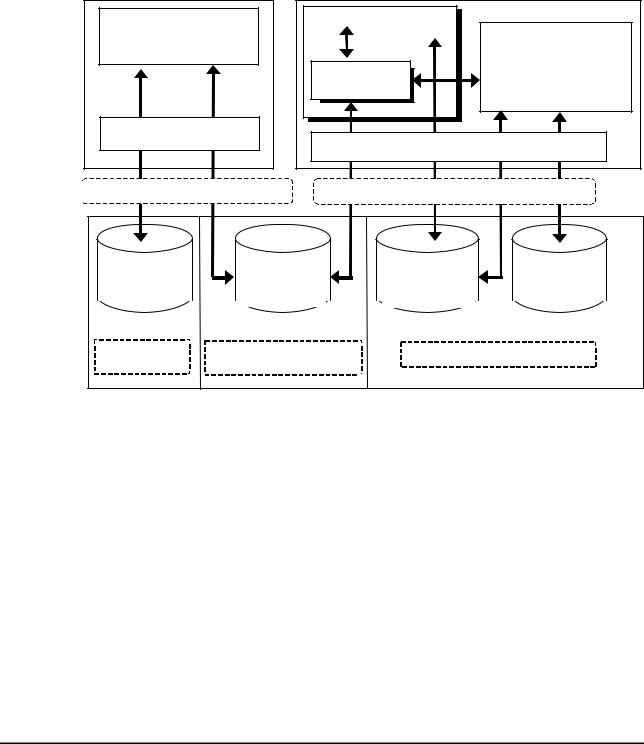
Components
Figure 2-1 illustrates the typical system configurations required for FXmto and FXotm operations. FXmto/otm operations are performed using the File Conversion Utility (FCU) and File Access Library (FAL), which are installed on the open-system host(s).
Application program |
Utility program |
OS (MVS or VSE) |
ExSA (ESCON®) interface
File Conversion Utility |
|
(FCU) |
|
|
Application program |
File Access |
Utility program |
Library (FAL) |
|
|
OS (UNIX, PC server) |
Fibre-channel interface
Database 1 |
Intermediate |
Intermediate |
Database 2 |
(e.g., DB2/XD)M) |
file 1 (SAM |
file 2 (UNIX/PC |
(e.g., ORACLE) |
|
dataset) |
server) |
|
(CKD format) |
(CKD format) |
(FBA format) |
(FBA format) |
Volume dedicated |
Volume shared |
Volumes dedicated to open system |
|
to S/390® |
by S/390 and UNIX/PC server |
|
|
Figure 2-1 FXmto and FXotm System Configuration
Figure 2-2 illustrates the typical system configurations required for FXoto operations, which are performed using the Formatter (FMT) and Allocater (ALC) utilities in addition to FCU and FAL.
2-2 |
About Cross-OS File Exchange Operations |
Hitachi USP V Cross-OS File Exchange User’s Guide
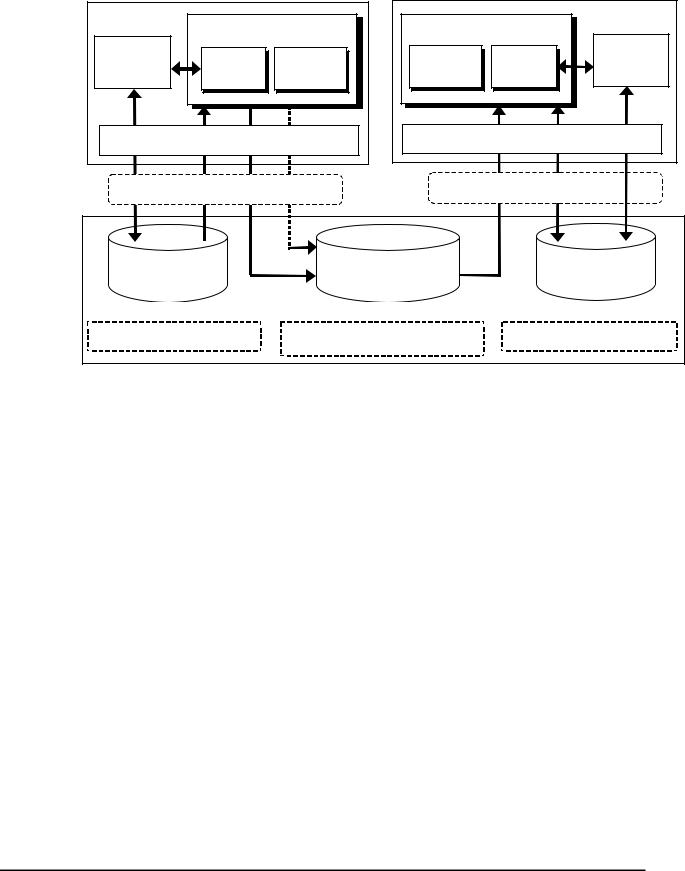
|
File Conversion |
||
Application |
Utility (FCU) |
||
File Access |
Formatter/ |
||
program |
|||
Utility program |
Library |
Allocater |
|
(FAL) |
(FMT/ALC) |
||
|
|||
|
OS (UNIX, PC server) |
|
|
Fibre-channel interface
File Conversion |
|
||
Utility (FCU) |
Application |
||
Formatter/ |
File Access |
program |
|
Allocater |
Library |
Utility program |
|
(FMT/ALC) |
(FAL) |
||
|
|||
|
OS (UNIX, PC server) |
|
|
Fibre-channel interface
Open-System |
Intermediate File |
Open-System |
Files |
(SAM dataset) |
Files |
(FBA format) |
(CKD format) |
(FBA format) |
Volume dedicated to open system |
Shared volume (initialized as mainframe |
Volume dedicated to open system |
|
CKD format by FMT/ALC) |
|
Figure 2-2 FXoto System Configuration
The FCU program provides the commands and graphical user interface (GUI) for FX file transfer operations as well as several important options for data exchange, including EBCDIC-ASCII code conversion and data record padding and delimiters. The FAL is a library of C functions (Visual C++® for Windows NT®), which provides an application-programming interface for data exchange. The FAL functions can be called by user application programs to read and write data in z/OS datasets on the TagmaStore USP and NSC. There are two types of FAL, the 32bitFAL and the 64bitFAL. The latter is provided by the TagmaStore USP and NSC. The FMT and ALC utilities enable the all-open TagmaStore USP and NSC user to format OPEN-x logical units (LUs) and create intermediate datasets for FXoto operations, without having to be attached to any z/OS hosts. OPEN-x is defined as a standard LU type. The TagmaStore USP and NSC subsystem currently supports OPEN-3, OPEN-8, OPEN-9, OPEN-E, OPEN-L and OPEN-V devices. Please contact your Hitachi Data Systems account team for the latest information on supported LU types.
About Cross-OS File Exchange Operations |
2-3 |
Hitachi USP V Cross-OS File Exchange User’s Guide
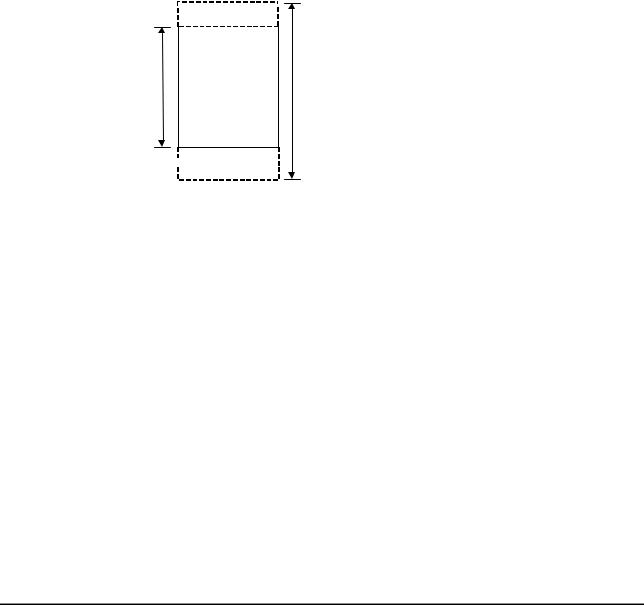
FX Volume Types
The FXmto and FXotm volumes are z/OS devices that can only be accessed by open-system hosts using the FAL/FCU software. The FXoto volumes are opensystem devices that cannot be accessed by z/OS hosts. FX operations are performed using the following types of FX volumes on the TagmaStore USP and NSC subsystems:
•FXmto, FXotm. The FX -A volumes can be used for FXmto and FXotm operations. z/OS hosts have normal read/write access to -A volumes. Opensystem hosts have read/write access to -A volumes but must use FAL/FCU to access these volumes as raw devices (no mount operation). Figure 2-3 shows the structure of the FX -A volumes.
MAINFRAME |
|
|
|
OPEN SYSTEM |
|
Label area |
Cyl#0 |
||
Cyl# 0 |
|
|||
|
|
|
|
|
|
VTOC |
|
||
|
|
|
||
|
|
|
|
|
Read/Write |
|
Datasets |
|
Read/Write |
|
|
|
||
Cyl# MAX.
 Management area
Management area
Cyl# max.
Figure 2-3 3390-3A/9A/LA Volume Structure (FXmto, FXotm,
FXoto)
Note: The -A volumes are not write-protected. Do not execute any opensystem write operations to -A volumes (except disk partitioning and labeling). Do not create a file system on an -A volume; this will overwrite the data exchange files on the volume.
•FXmto. The FX -B volumes can only be used for FXmto operations. z/OS hosts have normal read/write access to -B volumes. Open-system hosts have read-only access to -B volumes and must use FAL/FCU to read these volumes as raw devices (no mount operation). The -B volumes are write-protected from open-system access. The TagmaStore subsystem will reject all opensystem write operations to -B volumes (except disk partitioning and labeling) to protect the z/OS data on these volumes. Figure 2-4 shows the structure of the FX -B volumes.
2-4 |
About Cross-OS File Exchange Operations |
Hitachi USP V Cross-OS File Exchange User’s Guide
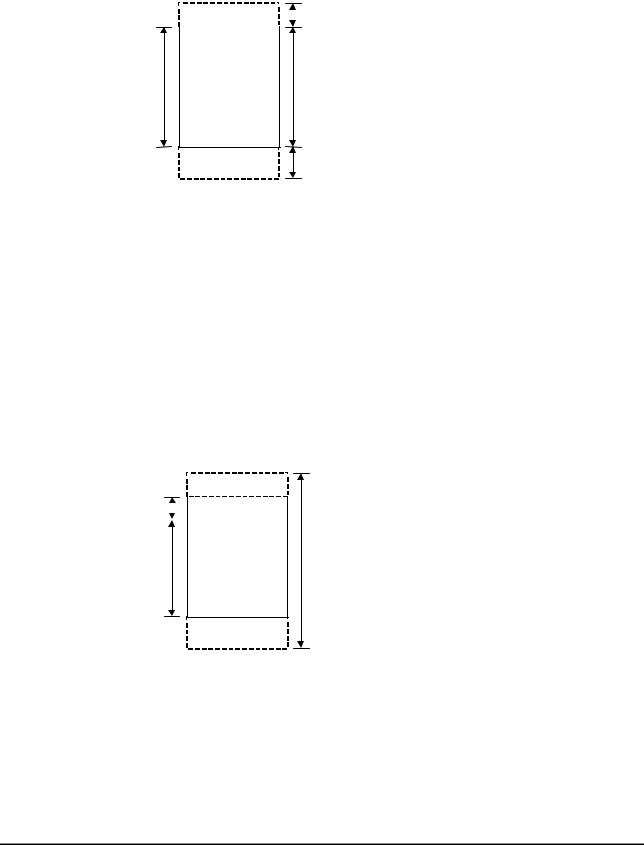
MAINFRAME |
|
|
|
|
OPEN SYSTEM |
|
Label area |
|
Cyl# 0 |
||
Cyl# 0 |
|
Read/Write |
|||
|
|
|
|
||
|
VTOC |
|
|
||
|
|
|
|
||
|
|
|
|
|
|
Read/Write |
|
Datasets |
|
|
Read only |
|
|
|
|
||
Cyl# MAX.
Read/Write
Management area
Cyl# max.
Figure 2-4 3390-3B/9B/LB Volume Structure (FXmto)
Note: The open-system host accesses only the volume table of contents (VTOC) area on -B volumes. Catalog or security control functions cannot be used to provide access control for these volumes.
•FXotm. The FX -C volumes can only be used for FXotm operations. Opensystem hosts have read/write access to the -C volumes but must use FAL/FCU to access these volumes as raw devices (no mount operation). z/OS hosts have read-only access to the -C volumes. The TagmaStore subsystem will reject all z/OS write operations to -C volumes (except VTOC) to protect the open-system data on these volumes. Figure 2-5 shows the structure of the FX -C volumes.
MAINFRAME |
|
|
|
OPEN SYSTEM |
|||
|
|
|
|
|
|
|
Cyl# 0 |
Cyl# 0 |
Label area |
||||||
|
|
|
|
||||
|
VTOC |
||||||
Read/Write |
|
|
|
||||
|
|
|
|
|
|
|
Read/Write |
|
|
|
|
|
|
|
|
|
|
|
|
|
|
||
Read only |
|
Datasets |
|
||||
|
|
|
|
||||
Cyl# MAX.
Management area
Cyl# max.
Figure 2-5 3390-3C/9C/LC, 3380-KC/3C Volume Structure (FXotm)
•FXoto. OPEN-x volumes that are formatted with the FX Formatter (FMT) utility can only be used for FXoto operations. Open-system hosts have read/write access to the OPEN-x FMT volumes but must use FAL/FCU to access these volumes as raw devices (no mount operation). z/OS hosts do not have any access to the OPEN-x FMT volumes. Figure 2-6 shows the structure of the FX OPEN-x FMT volumes.
About Cross-OS File Exchange Operations |
2-5 |
Hitachi USP V Cross-OS File Exchange User’s Guide

MAINFRAME |
|
|
|
OPEN SYSTEM |
|
Label area |
Cyl#0 |
||
Cyl# 0 |
|
|||
|
|
|
|
|
|
VTOC |
|
||
|
|
|
||
|
|
|
|
|
No Access |
|
Datasets |
|
Read/Write |
Cyl# MAX.
 Management area
Management area
Cyl# max.
Figure 2-6 OPEN-x FMT Volume Structure (FXoto)
Note: When the mainframe OS is VSE, DFSORT cannot be used after an FX volume is copied to another volume. Use the DITTO function for this purpose.
2-6 |
About Cross-OS File Exchange Operations |
Hitachi USP V Cross-OS File Exchange User’s Guide

Note for AIX: When installing FX devices in an AIX environment, the following notes apply:
•When the UserID is not the root, a patch is required.
•AIX V5.1 can be used with 64bitFAL.
Please contact your IBM technical representative for assistance.
Note for Microsoft Cluster Server: When installing FX devices in a Microsoft Cluster Server (MSCS) environment, you must write signatures on the FX volumes before configuring MSCS.
•The MSCS server cannot connect volumes that do not have signatures.
•The volume on which a signature is written cannot be accessed from another server.
•The volume on which a signature is written cannot be shared.
•Only the mainframe and the server that wrote the signature can access the volume that has the signature.
•Signatures cannot be written to FX volumes for which the emulation type is 3390-3X, 3390-9X 3390-LX , or 3380-KX, 3380-3X (X = A, B, C), when the OS server is Windows 2000/2003/Windows NT.
•When configuring MSCSand the server OS is Windows 2000/2003/Windows NT, FXotm and FXmto cannot be started.
Notes for Windows 2000/2003/Windows NT:
•Service Pack 1 must be installed when MSCS is configured
•A signature is not necessary for the MSCS configuration. A Write Error will occur if a signature is attempted.
Warning: Do not write a signature on FX Volumes having emulation types 3390-3X, or 3390-9X, 3390-LX, or 3380-KX, 3380-3X (X=A,B,C) in a Windows 2000/2003/Windows NT environment. If a signature-writing attempt is made by the Disk Administrator with Windows 2000/2003/Windows NT, a Write Error will appear in order to stop the signature from being written. When the Windows 2000/2003/Windows NT Disk Administrator starts again, a request will be made again to write the signature. Do not write the signature.
FCU File Transfer Options
For each FX operation, FCU requires that the transfer direction (mto or otm) and the source and target files be identified. (An FXoto operation consists of one FXotm operation followed by one FXmto operation.) In addition to these required parameters, FCU provides the following options for FX file transfer operations:
About Cross-OS File Exchange Operations |
2-7 |
Hitachi USP V Cross-OS File Exchange User’s Guide

•Code conversion (CC)
•Padding (PAD)
•Delimiters (DEL)
•Record description word (RDW)
•VSE record (VSE)
•Empty file (Emp)
Note: For FAL/FCU versions earlier than 01-XX-50, Multiple Volume Dataset is not supported. When a dataset is spanned over multiple volumes, only the portion of the dataset within one volume will be processed. For FAL/FCU versions 01-XX-50 or later, Multiple Volume Dataset is supported only for FXmto.
Note: FAL/FCU supports two kinds of mainframes, MVS and VSE. For Multiple Volume Dataset, FAL/FCU is only supported on MVS.
Code Conversion (CC) Option
The code conversion option can be used for FXmto and FXotm operations. The code conversion option enables you to specify either the default EBCDIC-ASCII code conversion table included with FCU (see Table 2-1), or your own code conversion table (see Table 2-2). When the default table is specified, FCU performs EBCDIC-to-ASCII code conversion for FXmto operations and ASCII- to-EBCDIC code conversion for FXotm operations as specified in Table 2-1 (see also Appendix C). The user-defined code conversion table must be a binary data file created by placing the target code values in the offset positions that correspond to the source code values.
Always use code conversion when transferring text files between mainframe and open systems. Do not use code conversion when transferring binary data files. Code conversion is available (EcA option) but not recommended for FXoto file transfers.
Note: FCU versions 01-01-40 and later support the user-defined code conversion table.
Note: The default EBCDIC-ASCII code conversion table is the ACM standard table (not CACM). Appendix C provides the code conversion information for the default table which is shown in Table 2-1. If the default code conversion table does not yield the desired results, create your own code conversion table. Please refer to the IBM code tables for detailed information on EBCDIC-ASCII code conversion.
2-8 |
About Cross-OS File Exchange Operations |
Hitachi USP V Cross-OS File Exchange User’s Guide

Table 2-1 |
Default EBCDIC-ASCII Code Conversion Table for FCU |
|
|
||||||||||||||
|
|
|
|
|
|
|
|
|
|
|
|
|
|
|
|
|
|
H |
|
|
|
|
|
|
|
|
|
|
|
|
|
|
|
|
|
L |
0 |
1 |
2 |
3 |
4 |
5 |
6 |
7 |
8 |
9 |
A |
B |
C |
D |
E |
F |
|
|
|
|
|
|
|
|
|
|
|
|
|
|
|
|
|
|
|
0 |
NUL |
DLE |
DS |
(90) |
SP |
& |
- |
(BA) |
(C3) |
(CA) |
(D1) |
(D8) |
{ |
} |
\ |
0 |
|
|
(00) |
(10) |
(80) |
(20) |
(26) |
(2D) |
(7B) |
(7D) |
(5C) |
(30) |
|||||||
1 |
SO |
DC1 |
SO |
|
|
|
/ |
|
a |
j |
|
|
A |
J |
|
1 |
|
H |
(11) |
S |
(91) |
(A0) |
(A9) |
(2F) |
(BB) |
(61) |
(6A) |
(E5) |
(D9) |
(41) |
(4A) |
(9F) |
(31) |
||
|
|||||||||||||||||
|
(01) |
|
(81) |
|
|
|
|
|
|
|
|
|
|
|
|
|
|
2 |
STX |
DC2 |
FS |
SYN |
(A1) |
(AA) |
(B2) |
(BC) |
b |
k |
s |
(DA) |
B |
K |
S |
2 |
|
|
(02) |
(12) |
(82) |
(16) |
(62) |
(6B) |
(73) |
(42) |
(4B) |
(53) |
(32) |
||||||
3 |
ETX |
DC3 |
(83) |
(93) |
(A2) |
(AB) |
(B3) |
(BD) |
c |
l |
t |
(DB) |
C |
L |
T |
3 |
|
|
(03) |
(13) |
(63) |
(6C) |
(74) |
(43) |
(4C) |
(54) |
(33) |
||||||||
4 |
PF |
TM |
BYP |
PN |
|
|
|
|
d |
m |
u |
|
D |
M |
U |
4 |
|
(9C) |
(9D) |
(84) |
(94) |
(A3) |
(AC) |
(B4) |
(BE) |
(64) |
(6D) |
(75) |
(DC) |
(44) |
(4D) |
(55) |
(34) |
||
|
|||||||||||||||||
5 |
HT |
|
LF |
RS |
|
|
|
|
e |
n |
v |
|
E |
N |
V |
5 |
|
(09) |
(85) |
(0A) |
(95) |
(A4) |
(AD) |
(B5) |
(BF) |
(65) |
(6E) |
(76) |
(DD) |
(45) |
(4E) |
(56) |
(35) |
||
|
|||||||||||||||||
6 |
LC |
BS |
ETB |
UC |
|
|
|
|
f |
o |
w |
|
F |
O |
W |
6 |
|
(86) |
(08) |
(17) |
(96) |
(A5) |
(AE) |
(B6) |
(C0) |
(66) |
(6F) |
(77) |
(DE) |
(46) |
(4F) |
(57) |
(36) |
||
|
|||||||||||||||||
7 |
DEL |
IL |
ESC |
EOT |
(A6) |
(AF) |
(B7) |
(C1) |
g |
p |
x |
(DF) |
G |
P |
X |
7 |
|
|
(7F) |
(87) |
(1B) |
(04) |
(67) |
(70) |
(78) |
(47) |
(50) |
(58) |
(37) |
||||||
8 |
GE |
CAN |
|
|
|
|
|
|
h |
q |
y |
|
H |
Q |
Y |
8 |
|
(97) |
(18) |
(88) |
(98) |
(A7) |
(B0) |
(B8) |
(C2) |
(68) |
(71) |
(79) |
(E0) |
(48) |
(51) |
(59) |
(38) |
||
|
|||||||||||||||||
9 |
RLF |
EM |
|
|
|
|
|
‘ |
i |
r |
z |
|
I |
R |
Z |
9 |
|
(8D) |
(19) |
(89) |
(99) |
(A8 |
(B1 |
(B9 |
(60) |
(69) |
(72) |
(7A |
(E1) |
(49) |
(52) |
(5A |
(39) |
||
|
|||||||||||||||||
|
|
|
|
|
) |
) |
) |
|
|
|
) |
|
|
|
) |
|
|
|
|
|
|
|
|
|
|
|
|
|
|
|
|
|
|
|
|
A |
SM |
CC |
SW |
|
|
! |
|
: |
|
^ |
|
|
|
|
|
|
|
M |
(92) |
(8A |
(9A |
(D5 |
(21) |
(CB |
(3A |
(C4 |
(5E) |
(D2 |
(E2) |
(E8) |
(EE) |
(F4) |
(FA) |
||
|
|||||||||||||||||
|
(8E) |
|
) |
) |
) |
|
) |
) |
) |
|
) |
|
|
|
|
|
|
B |
VT |
CUI |
CUI |
CU3 |
. |
$ |
, |
# |
|
|
|
|
|
|
|
|
|
(0B |
(8F) |
(8B |
(9B |
(2E) |
(24) |
(2C |
(23) |
(C5 |
(CC |
(D3 |
(E3) |
(E9) |
(EF) |
(F5) |
(FB) |
||
|
|||||||||||||||||
|
) |
|
) |
) |
|
|
) |
|
) |
) |
) |
|
|
|
|
|
|
|
|
|
|
|
|
|
|
|
|
|
|
|
|
|
|
|
|
C |
FF |
IFS |
|
DC4 |
< |
* |
% |
@ |
|
|
|
|
|
|
|
|
|
(0C |
(1C |
(8C |
(14) |
(3C |
(2A |
(25) |
(40) |
(C6 |
(CD |
(D4 |
(E4) |
(EA |
(F0) |
(F6) |
(FC) |
||
|
|||||||||||||||||
|
) |
) |
) |
|
) |
) |
|
|
) |
) |
) |
|
) |
|
|
|
|
D |
CR |
IGS |
EN |
NAK |
( |
) |
_ |
’ |
|
|
[ |
] |
|
|
|
|
|
(0D |
(1D |
Q |
(15) |
(28) |
(29) |
(5F) |
(27) |
(C7 |
(CE |
(5B |
(5D |
(EB |
(F1) |
(F7) |
(FD |
||
|
) |
) |
(05) |
|
|
|
|
|
) |
) |
) |
) |
) |
|
|
) |
|
|
|
|
|
|
|
|
|
|
|
|
|
|
|
|
|
|
|
E |
SO |
IRS |
ACK |
|
+ |
; |
> |
= |
|
|
|
|
|
|
|
|
|
(0E) |
(1E) |
(06) |
(9E) |
(2B |
(3B |
(3E) |
(3D |
(C8 |
(CF) |
(D6 |
(E6) |
(EC |
(F2) |
(F8) |
(FE) |
||
|
|
|
|
|
) |
) |
|
) |
) |
|
) |
|
) |
|
|
|
|
F |
SI |
IUS |
BEL |
SUB |
| |
~ |
? |
“ |
|
|
|
|
|
|
|
|
|
(0F) |
(1F) |
(07) |
(1A |
(7C |
(7E) |
(3F) |
(22) |
(C9 |
(D0 |
(D7 |
(E7) |
(ED |
(F3) |
(F9) |
(FF) |
||
|
|
|
|
) |
) |
|
|
|
) |
) |
) |
|
) |
|
|
|
|
|
|
|
|
|
|
|
|
|
|
|
|
|
|
|
|
|
|
Note: Appendix C shows the EBCDIC-ASCII code conversion information for this binary table.
Legend for Table 3-1
|
Bit |
|
|
|
|
|
Positions |
|
|
||
|
|
|
|
|
|
|
Hi |
|
Lo |
|
|
|
|
|
|
|
|
ASCII |
8765 |
|
4321 |
|
|
|
|
|
|
|
|
|
|
About Cross-OS File Exchange Operations |
2-9 |
||
Hitachi USP V Cross-OS File Exchange User’s Guide

EBCDIC (IBM) 0123 4567
2-10 |
About Cross-OS File Exchange Operations |
Hitachi USP V Cross-OS File Exchange User’s Guide

Table 2-2 User-Defined Code Conversion Table
Item |
Requirement(s) |
|
|
Size |
256 bytes |
|
|
Format |
Binary data |
|
|
Code length |
One byte (two-byte codes cannot be converted) |
|
|
File name |
The following sequences of characters cannot be used in the file |
|
name: |
|
EA EcA EkJ No |
|
If the file name for the code conversion table contains any of these |
|
sequences, FCU will ignore the file and use the default table instead. |
|
|
PIPE Function
This function transfers data entries from the mainframe to the application program or the utility program for UNIX systems using a “named pipe”. When this function is used, a mainframe dataset can be transferred to an open system. This is a much faster way to transfer data than the Code Conversion method.
A "named pipe" is a special file that is used to transfer data between unrelated processes. One (or more) processes writes to it, while another process reads from it. Named pipes are visible in the file system and may be viewed with ‘ls’ like any other file. (Named pipes are also called "fifo"s; this term stands for `First In, First Out'.) Named pipes may be used to pass data between unrelated processes, while normal (unnamed) pipes can only connect parent/child processes (with some exceptions). Named pipes are strictly unidirectional, even on systems where anonymous pipes are bidirectional (fullduplex).
Using the PIPE function in UNIX Systems
A "named pipe" is a special file that is used to transfer data between unrelated processes. One (or more) processes write to it, while another process reads from it. Named pipes are visible in the file system and may be viewed with `ls' like any other file. (Named pipes are also called "fifo"s; this term stands for `First In, First Out'.) Named pipes may be used to pass data between unrelated processes, while normal (unnamed) pipes can only connect parent/child processes (unless you try *very* hard). Named pipes are strictly unidirectional, even on systems where anonymous pipes are bidirectional (fullduplex).
About Cross-OS File Exchange Operations |
2-11 |
Hitachi USP V Cross-OS File Exchange User’s Guide
FAL/FCU Pipe Function Details
FCU can carry out data transmission to a pipe file. A user application opens and reads this pipe file, and a direct data transmission is attained between the application and FCU. There is no need for it to be output as a file on an HDD.
A named-pipe name is specified in a parameter definition file as the output file name. “PIPE=Yes” needs to be specified as an option. Under these conditions, FCU will open a pipe file with the specified output file name, and will transmit data to it.
If the specified file exists as a standard UNIX file, FCU re-creates a pipe file using the same name (the UNIX file is deleted.) Since FCU only inputs in data to a pipe, the FCU function needs to obtain the data via a user application. If data remains in the pipe, FCU will stop and processing does not progress to the next step. The FCU function has an inbuilt timer. If the application does not continue receiving data, FCU will send an error message after a certain set time, and it will progress to the next logical process.
Note: This function is only supported for UNIX systems. It is not supported for Windows 2000/2003/Windows NT. It is supported for mainframe to open systems data transfer only. This function requires an application program or a utility program to receive data entries using a named pipe.
Pipe Function Time-Out Value
•FCU waits for a “Read Data Entries” status message. A time-out error will be reported if the TIME OUT VALUE is not set appropriately. The TIME OUT VALUE should be set in the WAIT_TIME_VALUE environment variable. The limits are 0~1440 seconds (0 = unlimited). The default value is 10 when the timeout value is undefined.
•The following examples illustrate the use of the WAIT_TIME_VALUE environment variable.
Note: After setting the variable, log out and log in again to establish the variable’s value.
•Example 1: For C shell:
–Add “setenv WAIT_TIME_VALUE 300” to the file“.cshrc” in the home directory.
–If “.cshrc” does not exist, create it and add the “setenv” line.
•Example 2: For non-C shell:
–Add “WAIT_TIME_VALUE=300"
–Add "export WAIT_TIME_VALUE"
|
These two commands must be added to the file “.dtprofile” in the home |
|
directory. If “.dtprofile” does not exist, create it and add the lines. |
2-12 |
About Cross-OS File Exchange Operations |
|
|
|
Hitachi USP V Cross-OS File Exchange User’s Guide |
